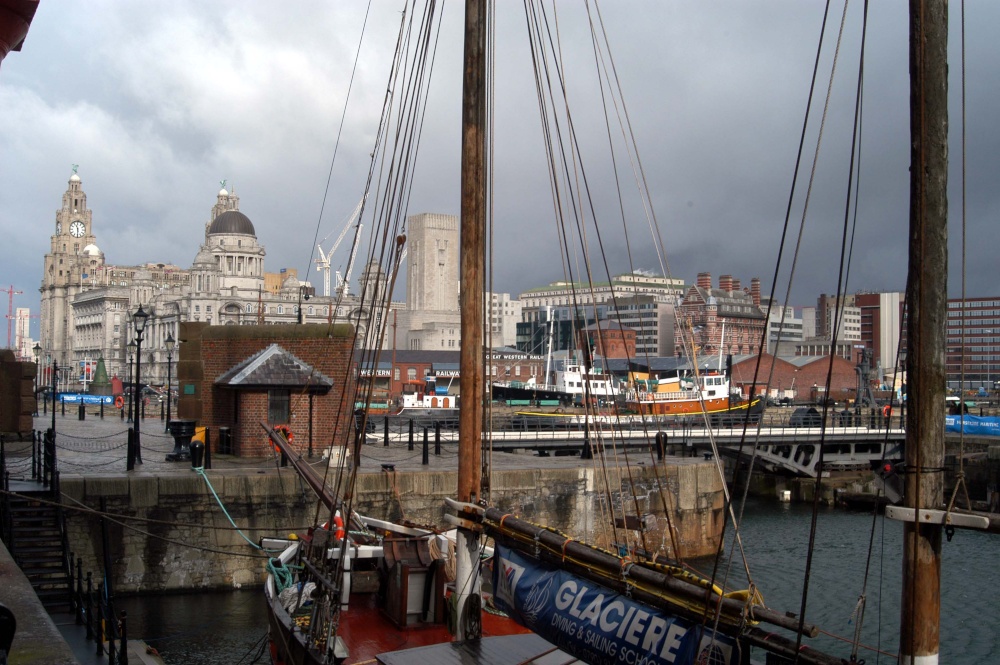Please login or click here to join.
Forgot Password? Click Here to reset pasword
 |
Tha Cavern Club, Liverpool The Cavern Club opened on 16 January 1957 as a jazz club, later becoming a centre of the rock and roll scene in Liverpool in the 1960s. The Beatles played at the club in their early years. This picture appears in the following picture tour: Camera Make: NIKON CORPORATION� Model: NIKON D100 � |
 |
Liverpool Docks Royal Albert Dock Albert Dock Liverpool 7.jpg Royal Albert Dock, Liverpool Waterfront The Royal Albert Dock Liverpool is located in LiverpoolThe Royal Albert Dock Liverpool Location of Royal Albert Dock within Liverpool Wikimedia | © OpenStreetMap General information Location Liverpool Coordinates 53°24′1.08″N 2°59′33.72″W Current tenants The Beatles Story, Merseyside Maritime Museum, Tate Liverpool Construction started 1841 Completed 1846 (official opening), 1847 (structural completion) Cost £782,265 Owner Albert Dock Company Ltd Technical details Floor area 1.29m sq ft (warehouse space), 7.75 acres (dock basin area) Design and construction Architect Jesse Hartley, Philip Hardwick The Royal Albert Dock[1] is a complex of dock buildings and warehouses in Liverpool, England. Designed by Jesse Hartley and Philip Hardwick, it was opened in 1846, and was the first structure in Britain to be built from cast iron, brick and stone, with no structural wood. As a result, it was the first non-combustible warehouse system in the world.[2] At the time of its construction the Albert Dock (as it was formerly known before receiving its Royal status in 2018) was considered a revolutionary docking system because ships were loaded and unloaded directly from/to the warehouses. Two years after it opened it was modified to feature the world's first hydraulic cranes.[3] Due to its open yet secure design, the Albert Dock became a popular store for valuable cargoes such as brandy, cotton, tea, silk, tobacco, ivory and sugar. However, despite the Albert Dock's advanced design, the rapid development of shipping technology meant that within 50 years, larger, more open docks were required, although it remained a valuable store for cargo. This picture appears in the following picture tour: Camera Make: NIKON CORPORATION� Model: NIKON D100 � |
 |
Liverpool Docks Royal Albert Dock Albert Dock Liverpool 7.jpg Royal Albert Dock, Liverpool Waterfront The Royal Albert Dock Liverpool is located in LiverpoolThe Royal Albert Dock Liverpool Location of Royal Albert Dock within Liverpool Wikimedia | © OpenStreetMap General information Location Liverpool Coordinates 53°24′1.08″N 2°59′33.72″W Current tenants The Beatles Story, Merseyside Maritime Museum, Tate Liverpool Construction started 1841 Completed 1846 (official opening), 1847 (structural completion) Cost £782,265 Owner Albert Dock Company Ltd Technical details Floor area 1.29m sq ft (warehouse space), 7.75 acres (dock basin area) Design and construction Architect Jesse Hartley, Philip Hardwick The Royal Albert Dock[1] is a complex of dock buildings and warehouses in Liverpool, England. Designed by Jesse Hartley and Philip Hardwick, it was opened in 1846, and was the first structure in Britain to be built from cast iron, brick and stone, with no structural wood. As a result, it was the first non-combustible warehouse system in the world.[2] At the time of its construction the Albert Dock (as it was formerly known before receiving its Royal status in 2018) was considered a revolutionary docking system because ships were loaded and unloaded directly from/to the warehouses. Two years after it opened it was modified to feature the world's first hydraulic cranes. Due to its open yet secure design, the Albert Dock became a popular store for valuable cargoes such as brandy, cotton, tea, silk, tobacco, ivory and sugar. However, despite the Albert Dock's advanced design, the rapid development of shipping technology meant that within 50 years, larger, more open docks were required, although it remained a valuable store for cargo. This picture appears in the following picture tour: Camera Make: NIKON CORPORATION� Model: NIKON D100 � |